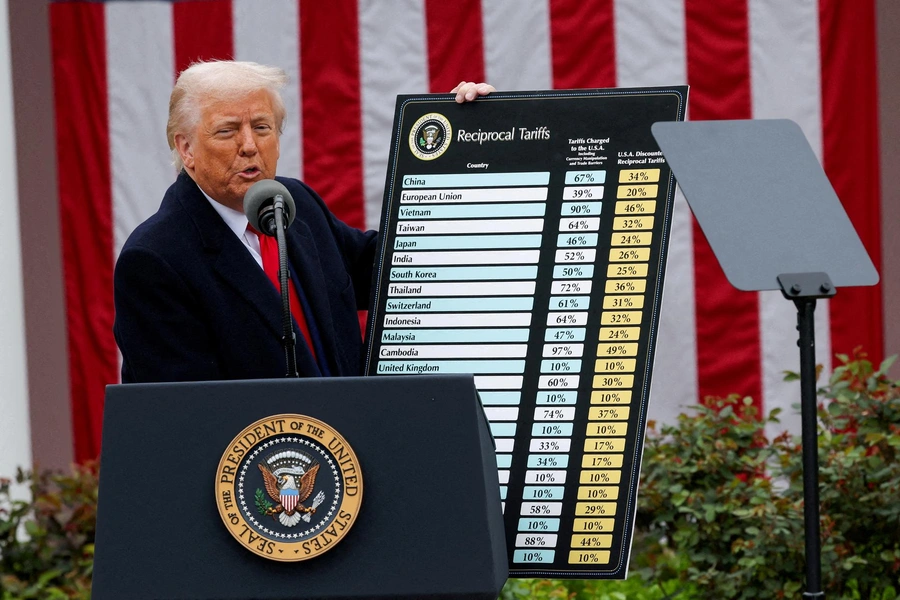Explore the impact of the Trump tariff policy in 2024. Understand how it affects the U.S. economy, global trade, jobs, and inflation. Stay informed with expert analysis and insights.
Introduction: What Is the Trump Tariff Policy?
In the 2024 election campaign, Donald Trump has doubled down on his signature trade strategy—tariffs. His proposed Trump tariff plan includes a 10% universal tariff on all imports and 60% or more tariffs on Chinese goods. These proposed trade barriers aim to protect American manufacturing and reduce reliance on foreign imports.
But what does this mean for the average American, U.S. businesses, and the global economy?

What Are Tariffs and Why Do They Matter?
Tariffs are taxes imposed on imported goods. When a country enacts tariffs, it makes foreign products more expensive. This can:
- Protect domestic industries from international competition
- Encourage consumers to “buy American”
- Raise government revenue
However, tariffs also risk raising prices for consumers, reducing trade, and triggering retaliation from other countries.
Key Highlights of the Trump Tariff Proposal (2024)
- 🔹 10% universal tariff on all imports
- 🔹 More than 60% tariffs on Chinese products
- 🔹 Possible tariffs on companies outsourcing jobs
- 🔹 Goal: Rebuild U.S. manufacturing and reduce trade deficits
Economic Impact of Trump Tariffs
1. Impact on Inflation and Prices
While tariffs protect local industries, they often raise consumer prices. With global inflation already a concern, additional tariffs may:
- Increase the cost of imported goods like electronics, cars, and clothing
- Put pressure on low-income households
- Complicate interest rate decisions by the Federal Reserve
2. Impact on American Jobs
Proponents argue tariffs will bring back manufacturing jobs. However, critics say they might hurt sectors that rely on imported materials, such as:
- Automotive
- Construction
- Technology
Net job gains depend on how industries adapt and whether trading partners retaliate.
3. Impact on U.S.–China Relations
China is a key target in Trump’s tariff strategy. With a proposed 60% tariff on Chinese imports, we may see:
- Escalated trade tensions
- Disruptions in global supply chains
- Retaliatory tariffs on U.S. agricultural or tech exports
How Businesses Are Preparing
- Retailers are reconsidering supply chains to avoid higher import costs.
- Manufacturers are lobbying against blanket tariffs, urging targeted trade policies.
- Investors are watching tariff news closely, as it impacts stock market volatility.
What Experts Are Saying
“A 10% tariff on all imports is essentially a tax hike on American consumers.” — The Wall Street Journal
“Trump’s tariffs could reindustrialize America—but at a short-term economic cost.” — Economist Intelligence Unit
Trump Tariffs vs. Biden’s Trade Policy
| Policy Aspect | Trump (2024) | Biden (Current) |
|---|---|---|
| Import Tariffs | 10% universal, 60%+ on China | Targeted tariffs on unfair trade |
| Focus | Manufacturing, trade deficits | Strategic supply chains, allies |
| Trade with China | Aggressive tariffs | Balanced competition & diplomacy |
Will Trump’s Tariff Plan Help the U.S. Economy?
That depends on your perspective:
- Supporters argue it will boost U.S. manufacturing, create jobs, and reduce dependency on China.
- Critics say it may increase prices, hurt trade relationships, and spark a global trade war.
Economists generally agree: Tariffs are a double-edged sword—offering short-term benefits to some industries but long-term risks to the economy.
Conclusion: What to Expect If Tariffs Return in 2025
If Trump returns to office and implements his tariff plan, the U.S. and global economies will feel the effects—both positive and negative. From your grocery bill to the value of the dollar, Trump tariffs could impact everyday life.
Stay updated with accurate and unbiased information as the 2024 U.S. election unfolds.
FAQs About Trump Tariffs
Q: What is the goal of Trump’s tariff plan?
A: To protect American industries, reduce the trade deficit, and bring jobs back to the U.S.
Q: Who benefits from tariffs?
A: U.S. manufacturers and industries that face foreign competition.
Q: Are tariffs good or bad?
A: It depends—tariffs can help certain sectors but may hurt consumers and global trade.

